Music is an art form whose medium is sound and silence. Its common elements are pitch (which governs melody and harmony), rhythm (and its associated concepts tempo, meter, and articulation), dynamics, and the sonic qualities of timbre and texture.
Actually Music is :-
- The art or science of combining vocal or instrumental sounds (or both) to produce beauty of form, harmony, and expression of emotion.
- The vocal or instrumental sound produced in this way.
The creation, performance, significance, and even the definition of music vary according to culture and social context. Music ranges from strictly organized compositions (and their recreation in performance), through improvisational music to aleatoric forms. Music can be divided into genresand subgenres, although the dividing lines and relationships between music genres are often subtle, sometimes open to personal interpretation, and occasionally controversial. Within the arts, music may be classified as a performing art, a fine art, and auditory art. It may also be divided among art music and folk music. There is also a strong connection between music and mathematics. Music may be played and heard live, may be part of a dramatic work or film, or may be recorded.
To many people in many cultures, music is an important part of their way of life. Ancient Greek and Indian philosophers defined music as tones ordered horizontally as melodies and vertically as harmonies. Common sayings such as "the harmony of the spheres" and "it is music to my ears" point to the notion that music is often ordered and pleasant to listen to. However, 20th-century composer John Cage thought that any sound can be music, saying, for example, "There is no noise, only sound." Musicologist Jean-Jacques Nattiez summarizes the relativist, post-modern viewpoint: "The border between music and noise is always culturally defined—which implies that, even within a single society, this border does not always pass through the same place; in short, there is rarely a consensus ... By all accounts there is no single and intercultural universal concept defining what music might be."
History
Prehistoric eras
Prehistoric music can only be theorized based on findings from paleolithic archaeology sites. Flutes are often discovered, carved from bones in which lateral holes have been pierced; these are thought to have been blown at one end like the Japanese shakuhachi. The Divje Babe flute, carved from a cave bear femur, is thought to be at least 40,000 years old. Instruments such as the seven-holed flute and various types of stringed instruments, such as the Ravanahatha, have been recovered from the Indus Valley Civilization archaeological sites. India has one of the oldest musical traditions in the world—references to Indian classical music (marga) are found in the Vedas, ancient scriptures of the Hindu tradition. The earliest and largest collection of prehistoric musical instruments was found in China and dates back to between 7000 and 6600 BC. The Hurrian song, found on clay tablets that date back to approximately 1400 BC, is the oldest surviving notated work of music.
Ancient Egypt
The ancient Egyptians credited one of their gods, Thoth, with the invention of music, which Osiris in turn used as part of his effort to civilize the world. The earliest material and representational evidence of Egyptian musical instruments dates to the Predynastic period, but the evidence is more securely attested in the Old Kingdom when harps, flutes and double clarinets were played. Percussion instruments, lyres and lutes were added to orchestras by the Middle Kingdom. Cymbals frequently accompanied music and dance, much as they still do in Egypt today. Egyptian folk music, including the traditional Sufi dhikr rituals, are the closest contemporary music genre to ancient Egyptian music, having preserved many of its features, rhythms and instruments.
Asian cultures
Indian classical music is one of the oldest musical traditions in the world. The Indus Valley civilization has sculptures that show dance and old musical instruments, like the seven holed flute. Various types of stringed instruments and drums have been recovered from Harrappa and Mohenjo Daro by excavations carried out by Sir Mortimer Wheeler. TheRigveda has elements of present Indian music, with a musical notation to denote the metre and the mode of chanting. Indian classical music (marga) is monophonic, and based on a single melody line or raga rhythmically organized through talas. Hindustani music was influenced by the Persian performance practices of the Afghan Mughals. Carnatic music popular in the southern states, is largely devotional; the majority of the songs are addressed to the Hindu deities. There are a lot of songs emphasising love and other social issues.
Indian Music Culture comprises of the 7 Swaras :- Sa Re Ga Ma Pa Dha Ni.
Asian music covers the music cultures of Arabia, Central Asia, East Asia, South Asia, and Southeast Asia. Chinese classical music, the traditional art or court music of China, has a history stretching over around three thousand years. It has its own unique systems of musical notation, as well as musical tuning and pitch, musical instruments and styles or musical genres. Chinese music is pentatonic-diatonic, having a scale of twelve notes to an octave (5 + 7 = 12) as does European-influenced music. Persian music is the music of Persia and Persian language countries: musiqi, the science and art of music, and muzik, the sound and performance of music (Sakata 1983).
Role of Media and Technology
The music that composers make can be heard through several media; the most traditional way is to hear it live, in the presence of the musicians (or as one of the musicians), in an outdoor or indoor space such as an amphitheatre, concert hall, cabaret room or theatre. Live music can also be broadcast over the radio, television or the Internet. Some musical styles focus on producing a sound for a performance, while others focus on producing a recording that mixes together sounds that were never played "live." Recording, even of essentially live styles, often uses the ability to edit and splice to produce recordings considered better than the actual performance.
As talking pictures emerged in the early 20th century, with their prerecorded musical tracks, an increasing number of moviehouse orchestra musicians found themselves out of work. During the 1920s live musical performances by orchestras, pianists, and theater organists were common at first-run theaters.[35] With the coming of the talking motion pictures, those featured performances were largely eliminated. The American Federation of Musicians (AFM) took out newspaper advertisements protesting the replacement of live musicians with mechanical playing devices. One 1929 ad that appeared in the Pittsburgh Press features an image of a can labeled "Canned Music / Big Noise Brand / Guaranteed to Produce No Intellectual or Emotional Reaction Whatever"[36]
Since legislation introduced to help protect performers, composers, publishers and producers, including the Audio Home Recording Act of 1992 in the United States, and the 1979 revised Berne Convention for the Protection of Literary and Artistic Works in the United Kingdom, recordings and live performances have also become more accessible through computers, devices and Internet in a form that is commonly known as Music-On-Demand.
In many cultures, there is less distinction between performing and listening to music, since virtually everyone is involved in some sort of musical activity, often communal. In industrialized countries, listening to music through a recorded form, such as sound recording or watching a music video, became more common than experiencing live performance, roughly in the middle of the 20th century.
Sometimes, live performances incorporate prerecorded sounds. For example, a disc jockey uses disc records for scratching, and some 20th-century works have a solo for an instrument or voice that is performed along with music that is prerecorded onto a tape. Computers and many keyboards can be programmed to produce and play Musical Instrument Digital Interface (MIDI) music. Audiences can also become performers by participating in karaoke, an activity of Japanese origin centered on a device that plays voice-eliminated versions of well-known songs. Most karaoke machines also have video screens that show lyrics to songs being performed; performers can follow the lyrics as they sing over the instrumental tracks.
Role of Internet
The advent of the Internet has transformed the experience of music, partly through the increased ease of access to music and the increased choice. Chris Anderson, in his book The Long Tail: Why the Future of Business is Selling Less of More, suggests that while the economic model of supply and demand describes scarcity, the Internet retail model is based on abundance. Digital storage costs are low, so a company can afford to make its whole inventory available online, giving customers as much choice as possible. It has thus become economically viable to offer products that very few people are interested in. Consumers' growing awareness of their increased choice results in a closer association between listening tastes and social identity, and the creation of thousands of niche markets.
Another effect of the Internet arises with online communities like YouTube and Facebook, a social networking service. Such sites simplify connecting with other musicians, and greatly facilitate the distribution of music. Professional musicians also use YouTube as a free publisher of promotional material. YouTube users, for example, no longer only download and listen to MP3s, but also actively create their own. According to Don Tapscott and Anthony D. Williams, in their book Wikinomics, there has been a shift from a traditional consumer role to what they call a "prosumer" role, a consumer who both creates and consumes. Manifestations of this in music include the production of mashes, remixes, and music videos by fans.
Business
The music industry refers to the business industry connected with the creation and sale of music. It consists of record companies, labels and publishers that distribute recorded music products internationally and that often control the rights to those products. Some music labels are "independent," while others are subsidiaries of larger corporate entities or international media groups. In the 2000s, the increasing popularity of listening to music as digital music files on MP3 players, iPods, or computers, and of trading music on file sharing sites or buying it online in the form of digital files had a major impact on the traditional music business. Many smaller independent CD stores went out of business as music buyers decreased their purchases of CDs, and many labels had lower CD sales. Some companies did well with the change to a digital format, though, such as Apple's iTunes, an online store that sells digital files of songs over the Internet.
Types Of Music Instruments
MUSICAL INSTRUMENTS
A. Strings
B. Woodwinds
C. Brass
D. Percussion
E. Keyboard Instruments
F. Other Instruments
Music Pictures for Classroom and Therapy Use
Banjo, Boombox, Bugle, Castanets, Circle Time, Clarinet, Compact Disc, Cymbals, Dance, Disco Ball, Drum , Drummer
Drummers , Flute, Flutist , Golden Harp, Guitar, Harmonica, Harp, Headphones, Jig, Ladies Dancing, Maracas, MP3 Player
Music, Music Note, Music Time, Note, Parade, Pat
Piano, Pipers Piping , Radio, Record, Sax, Sharp, Singing, Staff, Sticks, Sway, Tambourine, Theater, Trombone, Trumpet
Trumpet , Tuba, Ukelele, Violin, Wiggle, Xylophone
Musicians
The words for musicians who play individual instruments:
cello
cellist
clarinet
clarinetist
drums
drummer
guitar
guitarist
keyboard
keyboardist
piano
pianist
saxophone
saxophonist
trombone
trombonist
trumpet
trumpeter
violin
violinist
More words for people involved in music:
alto a female singer with a low voice
bass a male singer with a low voice
choir or chorus director someone who directs a group of singers
conductor someone who directs a band or an orchestra
singer a person who makes music with his or her voice
soprano a female singer with a high voice
tenor a male singer with a high voice
cellist
clarinet
clarinetist
drums
drummer
guitar
guitarist
keyboard
keyboardist
piano
pianist
saxophone
saxophonist
trombone
trombonist
trumpet
trumpeter
violin
violinist
alto a female singer with a low voice
bass a male singer with a low voice
choir or chorus director someone who directs a group of singers
conductor someone who directs a band or an orchestra
singer a person who makes music with his or her voice
soprano a female singer with a high voice
tenor a male singer with a high voice
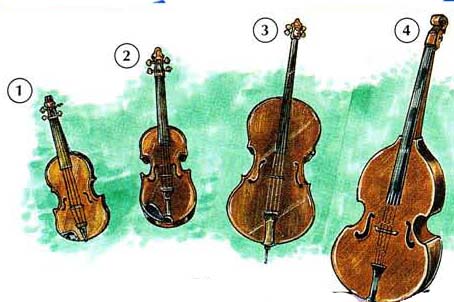







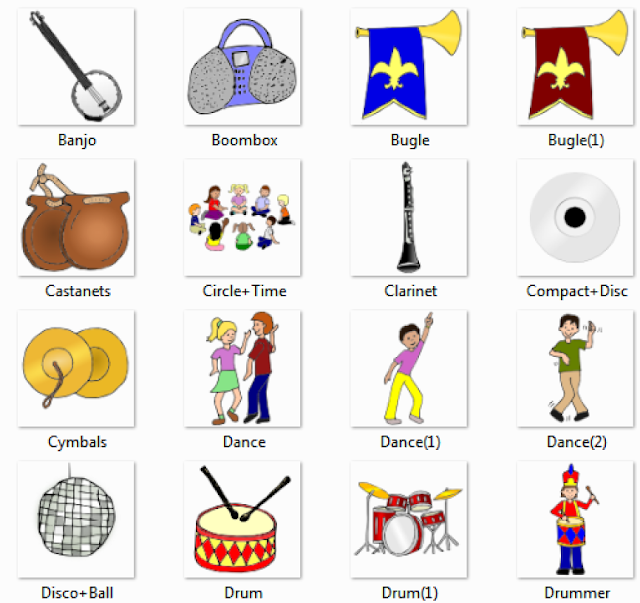
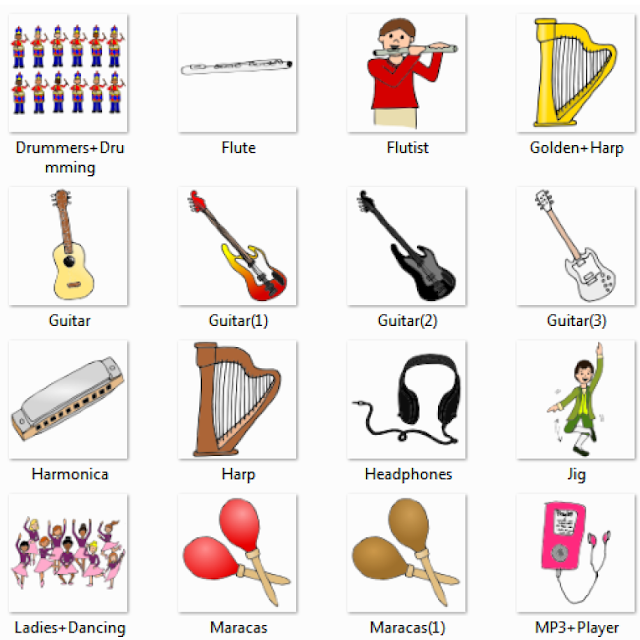

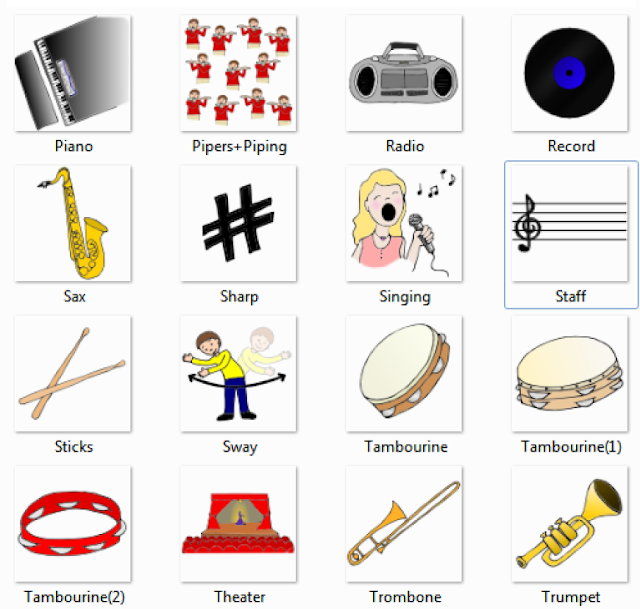
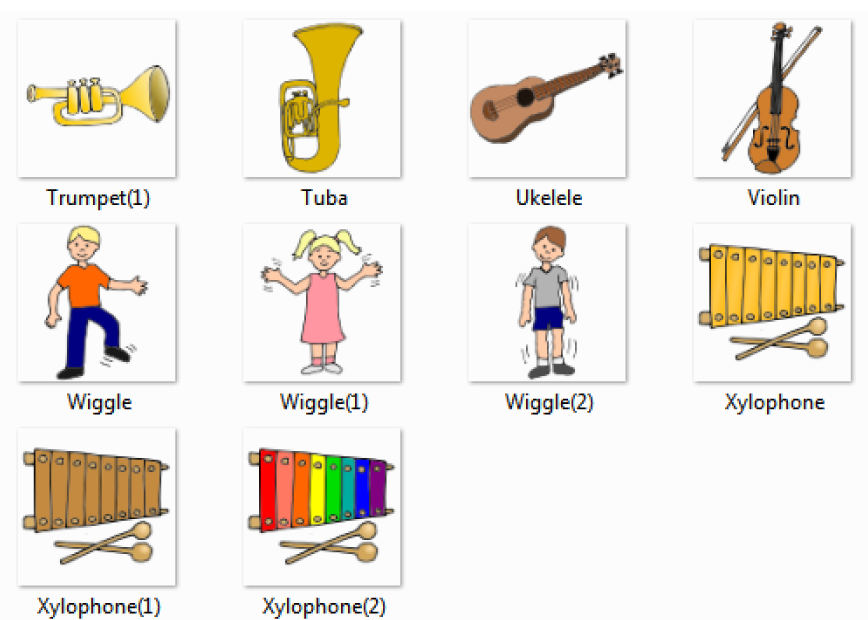
No comments:
Post a Comment